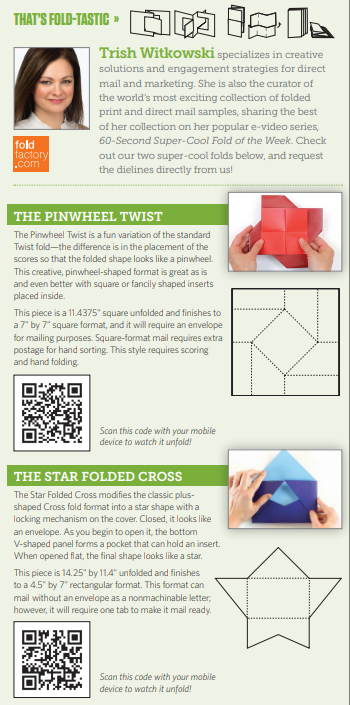Many of us begin the year by putting together a 12-month editorial calendar, believing that outlining the content for the year in advance will make the week-to-week and day-to-day execution much smoother by having the plan done in advance. However, thinking in terms of the annual (or even a six-to-nine-month) cycle locks your team into a plan that reduces valuable flexibility and reactivity—and the sheer volume can be overwhelming. It also masks the fact that terrific content marketing isn’t a series of scheduled posts but is instead the execution of a well-crafted strategy.
Shift Your Mindset
By shifting your mindset to a quarterly calendar and goals rather than annual, you shorten the timeline, providing the flexibility needed to react to changes in your industry or organization and to adjust the content and goals based on real-time trends, performance, and analytics.
We’re big fans of the Content Marketing Institute, which is hands down the industry thought leader in training, research, resources, and, well, publishing excellent material on the topic of content marketing! Practicing what they preach, CMI recently welcomed Kelsey (Meyer) Raymond, cofounder and CEO of Influence & Co., to publish seven steps to a more strategic editorial-calendar approach. Raymond’s simplification of the process was spot-on, so we summarized her recommended process for you, adding a few thoughts of our own.
Step 1: Identify who needs to be included.
For your content to bring extraordinary value to its consumers, it shouldn’t be developed by just one person in your marketing department. Seek out and include subject-matter experts (SME), writers, designers, etc. who can offer insightful education and acumen on different topics. These people may be within your organization, or they may come from relationships with external content-creation partners, vendors, manufacturers, or even customers. It may make sense to assign a writer to an SME and let them work as a team.
Step 2: Develop quarterly goals.
Consider how your content can contribute toward supporting your marketing goals. Raymond found most marketers have at least one of these three goals as part of their content marketing:
- Improve brand awareness through thought leadership
- Increase leads generated through content
- Improve search rankings through targeted SEO keywords
By picking one primary goal per quarter, you can outline a strategy that will include content mix, proposed sources and writers, any additional persons who should be included in each piece of content (such as an SME), and finally, a promotion and distribution plan.
Step 3: Determine your quarterly content mix.
You should have an at-a-glance list of the topics you will address, as well as the mix of content you will create each quarter. Types of content can include video, interviews, podcasts, publications, drip campaigns, gated content, guest articles, or blogs. Raymond provides the following example as a quarterly content mix:
- Six unique-topic, guest-contributed articles with backlinks to related online content visited by prospective customers
- Eighteen blog posts on your site: three posts for each topic addressed in the six guest-contributed articles
- Two gated pieces of content—each long-form and aligned with nine of your blog posts
- Two drip email campaigns (one for each gated content piece)
Step 4: Change “We hope to” to “We can do.”
Start with your publish date and work backward to create a schedule for the following:
- Topics confirmed
- Type of content confirmed
- Author assigned
- Questions submitted to a subject-matter expert (or outline created for the writer, videographer, interviewer, etc.)
- Answers submitted from subject-matter experts
- Draft of content piece completed
- Content piece reviewed and edited
- Content piece approved
- Content piece uploaded to platform or submitted for publishing
- Promotion plan initiated
Step 5: Deliberate the details.
You now have preliminary topics and a schedule. It’s time to gather your team together and talk specifics about each upcoming piece of content. Completing step 4 will ensure your team’s focus on each content topic and give you the exact knowledge of how many and what types of content you will need to create for the quarter. You will also be able to determine available resources as well as the goal of each content asset.

Measuring Results
“Increase brand awareness” is a worthy goal, but at some point you’re going to have to demonstrate the fact that you’ve actually increased your brand’s awareness. Determining what defines success and how you will measure it from the outset will help you track your content’s performance and make any needed adjustments to future content assets.
Increasing brand awareness can be measured by tracking the number of social media likes and shares each week, with a stated goal of increasing those by a certain percentage. That white paper you had an expert produce? You can determine its success by the number of downloads or by social media mentions. If your goal in producing the white paper was lead nurturing, then clicks from a drip campaign can be your metric. Your website analytics can let you show how the white paper and accompanying content mix attracted traffic to the landing page and from there to the site as a whole.
Following these five steps will allow you to produce a strategic quarterly editorial calendar that not only supports your overall content marketing strategy but also provides you with the flexibility to change it as needed and to demonstrate the overall success of your plan.
Beyond Print Magazine
Request your complimentary Beyond Print Magazine, mailed quarterly.








